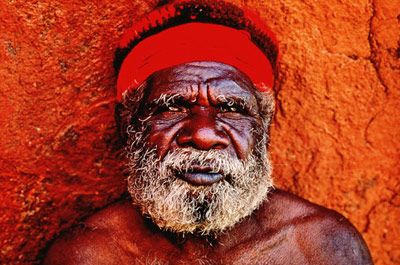
Aborigines are the world's oldest continuous culture, and though they arrived in Australia between 40,000 and 60,000 years ago, their appearance has not changed significantly. They typically have deep-set eyes, broad noses, full lips and prominent cheekbones.
Advertisement
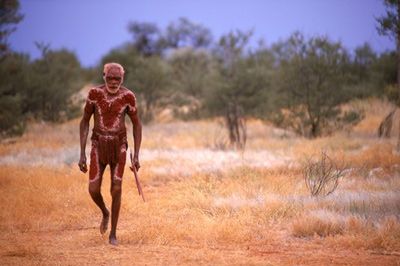
The Aborigines' creation story describes their arrival in terms of the "Dreamtime," when the spirits rose from below the Earth and transformed into all the natural elements you see in Australia. Because of this, Aborigines regard the land as sacred.
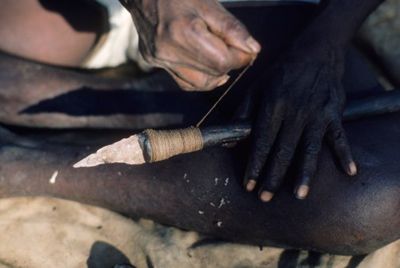
Early Australian Aborigines were hunter-gatherers who practiced no farming techniques and kept no domestic animals. Most Aboriginal weapons were made from stone or wood. This spear is made of stone and reminiscent of the weapons used in ancient times. However, their lives would be changed forever in 1788.

After the arrival of the British in 1788, the Aboriginal population dwindled as thousands died from disease and slavery. Unfortunately, things got worse before they got better.
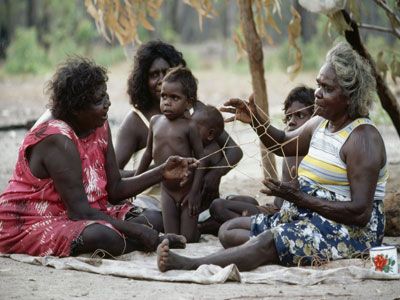
In the early part of the 20th century, non-indigenous Australians decided the only way to save the Aborigines was to assimilate them to the white-Australian way of life. Thousands of Aboriginal children, known as the Stolen Generation, were torn from their families and culture for more than half of the 20th century.
Advertisement
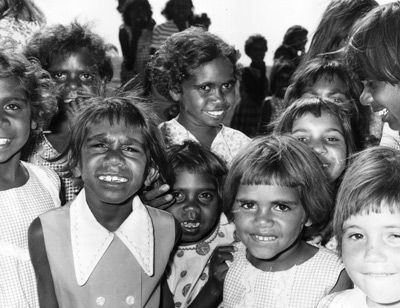
In 1967, following the example of the Civil Rights Movement in America, the Aborigines began to fight for equal rights. In 2008, the Australian government issued a formal apology to the Stolen Generation to bridge the gap between Aborigines and non-indigenous Australians.
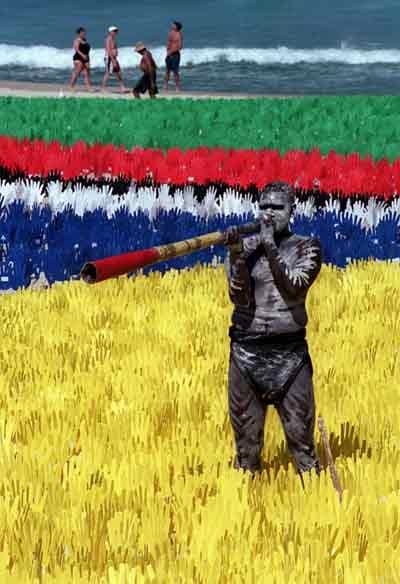
Aboriginal performer Djakapurra Munyarryun plays the didjeridoo amid the 'Sea of Hands' on Sydney's Bondi Beach, symbolizing reconciliation between Aborigines and white Australians.

Monero Aborigines perform a traditional welcoming dance under a 150-year-old fig tree during the "Tubowgule - The Meeting of the Waters" ceremony in Sydney's Botanical Gardens, Aug. 17, 2000.
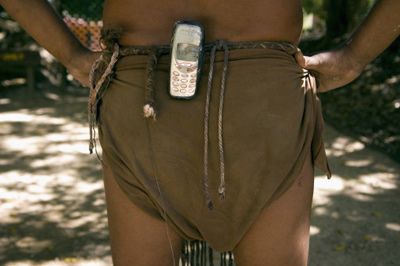
Today, Aborigines have found a balance between the old and the new. An Aboriginal man stands in traditional dress with a cell phone clipped to his loincloth.
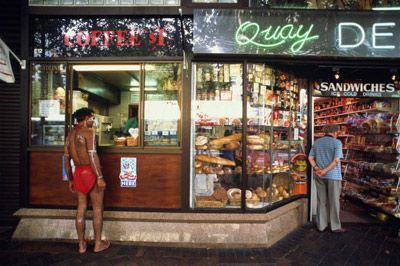
Many Aborigines, like this one at a train station in Sydney, live in modern, large cities, but they continue to hold onto the Aboriginal heritage and traditions. Learn more about How Aborigines Work.
Advertisement